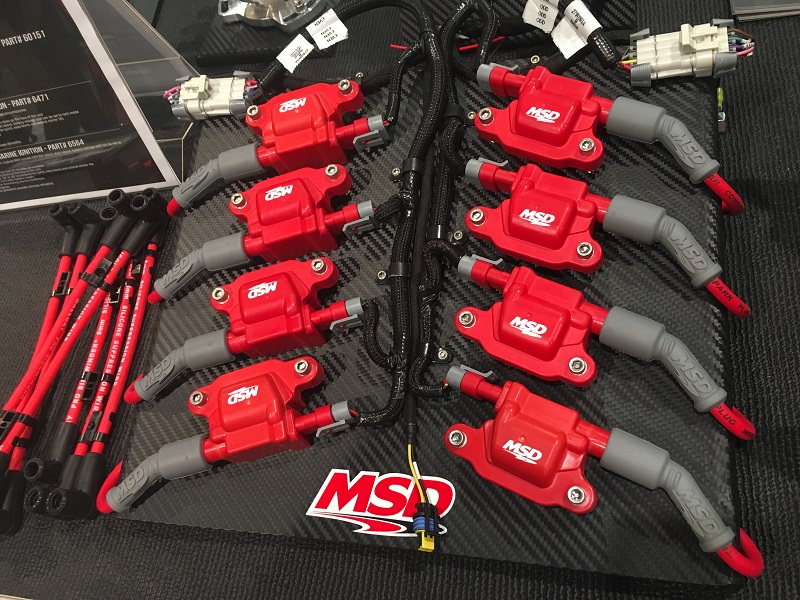Q: How does an ignition coil work?
…
A: Ignition coils are electrical transformers. They convert low voltage to high voltage through a process called induction. There are various designs, but all ignition coils do the same basic job.

Ignition Coil Overview
An ignition coil is made up of an iron core surrounded by coils of copper wire.
Around the outside of the coil is the primary winding. It is usually a larger wire coiled a few hundred times.
On the inside of the coil, next to the core, is the secondary winding. It is usually a smaller wire coiled a few thousand times.
The coil is then filled with oil or epoxy to help with cooling.
The coil also has a primary (input) terminal, a negative (ground) terminal, and a secondary (output) terminal.

How does it work?
- Electrical current flows into the primary terminal and the primary winding. This builds a magnetic field around the iron core.
- When triggered, the current to the primary winding is stopped.
- The magnetic field collapses.
- This induces a high-voltage surge in the secondary winding.
- The high-voltage current leaves the coil through the output terminal.
- The current is sent to the spark plug.
Depending on the design of the ignition system, the current may pass through the distributor or go directly to the spark plugs.
…
This is another in a series of weekly Q&A Mailbag sessions with Summit Racing‘s tech department, in which there are hundreds more. Click here to see them all.

Ignition coils are fairly simple in their design and operation. OAC did their usual good job in explaining how they work in 6 easy steps. Over and done. Nice job but I was hoping for a bit more information about the different design features of aftermarket high performance and racing only coils available from Summit Racing. Like which ones are suitable for continuous operation and which are only rated for short duration output typically found in Drag Racing applications. Is overheating the only reason for the extreme output coils limited run time capacity and why ? Curious minds…and the beat goes on…..
[…] Q: How does an ignition coil work? … A: Ignition coils are electrical transformers. They convert low voltage to high voltage through a process called induction. There are various designs, […] Read full article at http://www.onallcylinders.com […]